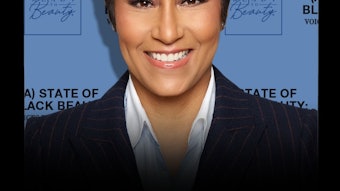I’m not a natural-born writer. That’s not false modesty, as I make my living working with words, it’s just the truth. I have plenty of ideas, but pulling them out of my head when needed and turning them into compelling words on the page that are worth a damn involves a lot of time staring at a screen with my head in my hands. And we’re not talking a novel here—we’re talking 500 words or so... So, I’m thankful for the constant stream of online headlines that jar things loose by being either irksome, interesting or relatable to something GCI has covered—and a combination of the three is golden.
As I write this, Apple revealed its iPad Air 2. Really not that interesting, it fell into the irksome category for me, thereby inspiring words for this column as my deadline loomed. I know it sounds curmudgeonly when the middle-age guy gripes about yet another tech product, but it is more than “why does anyone need a 6.1 mm, thinner than a pencil screen?” It is not the product itself or the myriad of other Apple launches—it is the proclivity to “update” and “upgrade” because something seemingly better has come along. Lyrics from an old Sinead O’Connor song popped in my head, “I have all that I requested, and I do not want what I haven’t got.”
Most of us request tech products that serve a defined need or service. We bought iPods because they were convenient ways to store and play music, and they did that incredibly well. We bought cell phones because we could make calls whenever and wherever we were. We bought iPhones because they combined the two and allowed us to browse the Internet. I’m somewhat oversimplifying all of this, but when all of our requests have been met, the only thing left to do is update and upgrade. And updates are not necessarily upgrades. In fact, when the consumer has to relearn how to use a device and its functionalities, I’d argue that it is a downgrade.
I could go on, but it just turns to point-by-point complaints, so I’ll just jump to the point. When you get down to it, there is often a disconnect between what consumers want/need and what is sold to them and how—and that’s not something confined to tech. Diagonal Reports believes that the beauty industry and its consumer are out of sync. Consumers view beauty by functional need rather than by category; consumers conceptualize beauty in terms of their needs, focusing on an outcome such as a “younger” or “fairer” skin or clean and/or manageable hair. The universal starting point for everyone is “me” and “my problem.” However, the industry, according to the report, sells the category classification, the technology, the channel and the segment on the “wrapping.”
According to Diagonal, the rewards for matching needs with products are great. It reports that a historical review of research reports shows a consistent trend: companies successfully enter the market by focusing on buyers’ problems. To achieve the ultimate goal to build and retain brand loyalty, what’s a better way than using the consumer as an inspiration and focusing on what they need/want and not what we want to sell them?










